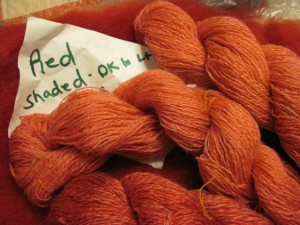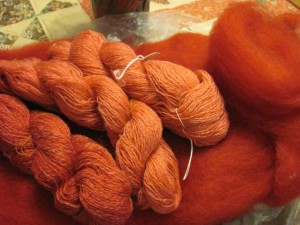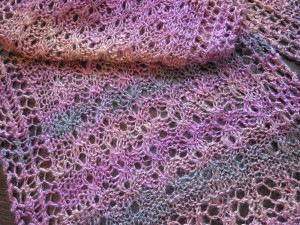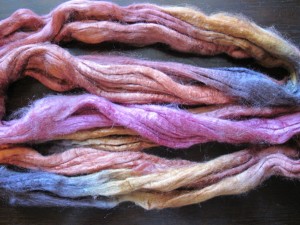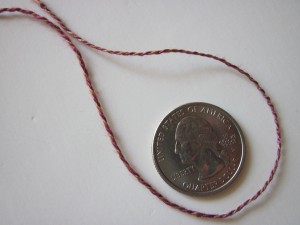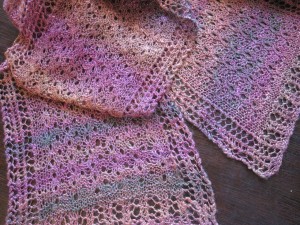Happy Valentine’s Day! On this day, it seems apropos to celebrate Twisted Tuesday with this collage of graduated red skeins of yarn I finally finished spinning not too long ago.
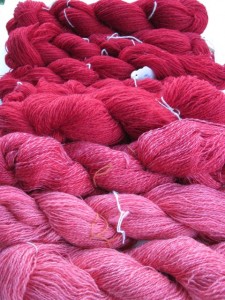
The batts from which I spun this yarn had been dyed by Rhonda Selser (of Ewe Mom’s, DeRidder, LA) from wool she sheered and carded from her own Romney sheep. What was so intriguing to me was they way in which she had dyed the pound of batts. It was hard to resist the lovely shades of red, too.
I did not see Rhonda dye the batts, but she explained that she had laid the stack of batts atop the dye solution in a large cooler. Then very slowly let the batts sink so that the bottom layers resulted in the darkest shades (having been in the dye bath longer and therefore having a chance to grab more of the dye particles) and the top layers the lightest.
I didn’t think about getting photos years ago when I first began spinning the batch of batts. Then I set things aside and didn’t get back to spinning for several years. But this project had always been on my mind and has been one of the first that I got out when sorting through my spinning stash recently. These pictures don’t give true color because I grabbed them indoors under poor lighting, but you can see some of the batts and little “nests” of fiber that I stripped from the batts and pre-drafted.
The sequence I used for spinning was to start with the lightest batt and proceed to darkest. I spun a fine singles on my double treadle Majacraft. After 2 bobbins where filled, I plied those together. Then filled up 2 more bobbins, and plied, etc. You’ll notice one skein which is much smaller than the others. That is where I was having trouble with my wheel (the drive band gave out). Not being able to readily get a replacement in, I experimented with some make-shift solutions. That is a whole ‘nother story, lol. But I did finally manage to get things going again.
Now, having completed the spinning, I am just enjoying the pretty skeins. Eventually, I guess I will decide what they will become in their next life. Meantime, it doesn’t feel like they want to be hurried, and the eye candy is plenty enough satisfaction to me to claim this as a ‘completed project’ for now.
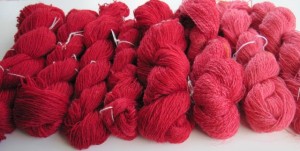
Hope you are enjoying some pretty red things for your Valentine’s Day, too!

